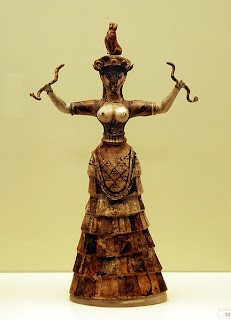Dome of Rock Temple Mount completed 691 CE ,Jerusalem
The Dome of the Rock is perhaps one of the greatest and more splendid examples of Islamic Art. This sacred building, was built on the Temple Mount in Jerusalem, a place considered holy by Jewish and Muslims alike. It is believed by art historians that this was the very site were the temple of Solomon, that sacred temple inspired of God to King David and built under the supervision of his son Solomon, was erected. This temple was later destroyed and in its place was constructed the Dome of the Rock because Muslims believed that the rocks over which the temple was built actually holds the remains of Adam and Abraham. The need for the Muslim people to build their temple in such a sacred place , compares to the Greeks who would build their temples on specially places , high on the mountain tops , were all the citizens could see the temple from every angle of the city . Early Islamic art was mostly expressed on mosaics and textiles, when expressed on as paintings it would rarely if ever portrayed human beings or animals, this was because of the Sharia Law mentioned in the Qur’an which forbidden human beings to be painted or shown in art, instead Muslims used geometric figures in combination with Calligraphy to create magnificent art of works that would decorate the inside of their sacred buildings and shrines. Often the Art of Calligraphy in their shrines would site pages from the Qur’an and mentioned the name of God to remind his followers of his greatness and magnificent power. It is interesting to notice that Muslims didn’t use human imagery in their art for the fear of becoming idolatrous people and sinning against God, but that did not stop them from finding a new art method that would allow them to worship and venerate their God, or Allah ,without the fear of compromising their beliefs and committing a great sin. Islamic art also employed the use of geometrical shapes and calligraphy to decorate the walls of mosques with floral and vegetal themes, which would serve as a reminded to the faithful that after following the teachings of the Qur’an and the prophet paradise would await for them in the next life. The use of the dome provides the same heavenly qualities the Romans and early Christians tried to achieve by adorning their architecture with dome. The use of the dome would mimic the heavens and give the followers the idea of being closer to heaven. Many aspects of Islamic art were borrowed from roman and early Christian and Byzantine and this can be simply seen by how Muslims vastly used mosaics to decorate their places of worship.









